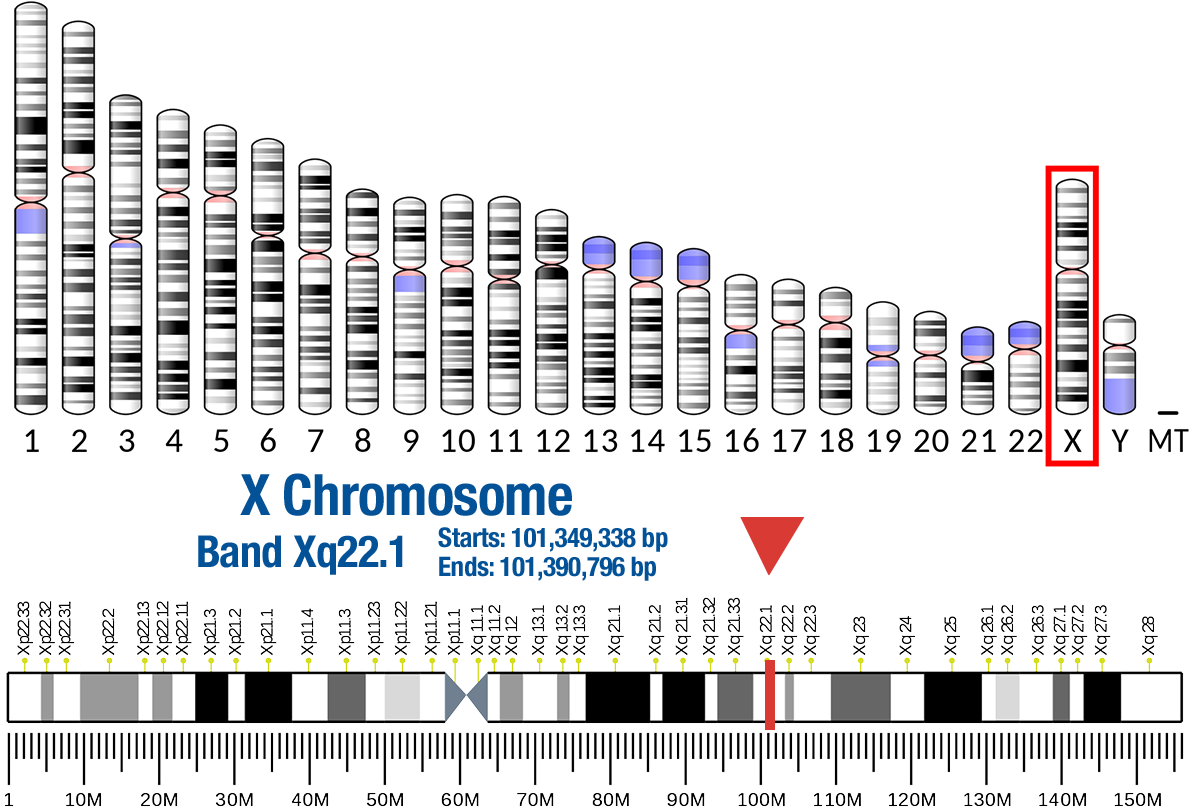
The protein encoded by this gene plays a crucial role in B-cell development. Mutations in this gene cause X-linked agammaglobulinemia type 1, which is an immunodeficiency characterized by the failure to produce mature B lymphocytes, and associated with a failure of Ig heavy chain rearrangement. Alternative splicing results in multiple transcript variants encoding different isoforms. [provided by RefSeq, Dec 2013].
- Nucleotide binding
- Protein kinase activity
- Enables protein serine/threonine/tyrosine kinase activity
- Enables protein tyrosine kinase activity
- Transmembrane receptor protein tyrosine kinase activity
- Located in nucleus
- Located in cytoplasm
- Located in cytosol
- Located in plasma membrane
- Membrane
- Involved in positive regulation of type III hypersensitivity
- Involved in positive regulation of type I hypersensitivity
- Involved in negative regulation of cytokine production
- Involved in adaptive immune response
- Involved in B cell affinity maturation
Non-receptor tyrosine kinase indispensable for B lymphocyte development, differentiation and signaling. Binding of antigen to the B-cell antigen receptor (BCR) triggers signaling that ultimately leads to B-cell activation. After BCR engagement and activation at the plasma membrane, phosphorylates PLCG2 at several sites, igniting the downstream signaling pathway through calcium mobilization, followed by activation of the protein kinase C (PKC) family members. PLCG2 phosphorylation is performed in close cooperation with the adapter protein B-cell linker protein BLNK. BTK acts as a platform to bring together a diverse array of signaling proteins and is implicated in cytokine receptor signaling pathways. Plays an important role in the function of immune cells of innate as well as adaptive immunity, as a component of the Toll-like receptors (TLR) pathway. The TLR pathway acts as a primary surveillance system for the detection of pathogens and are crucial to the activation of host defense. Especially, is a critical molecule in regulating TLR9 activation in splenic B-cells. Within the TLR pathway, induces tyrosine phosphorylation of TIRAP which leads to TIRAP degradation. BTK plays also a critical role in transcription regulation. Induces the activity of NF-kappa-B, which is involved in regulating the expression of hundreds of genes. BTK is involved on the signaling pathway linking TLR8 and TLR9 to NF-kappa-B. Transiently phosphorylates transcription factor GTF2I on tyrosine residues in response to BCR. GTF2I then translocates to the nucleus to bind regulatory enhancer elements to modulate gene expression. ARID3A and NFAT are other transcriptional target of BTK. BTK is required for the formation of functional ARID3A DNA-binding complexes. There is however no evidence that BTK itself binds directly to DNA. BTK has a dual role in the regulation of apoptosis.
Isolated Growth Hormone Deficiency, Type Iii, With Agammaglobulinemia
Isolated Growth Hormone Deficiency Type Iii
Agammaglobulinemia 1, Autosomal Recessive
Polyarticular Juvenile Idiopathic Arthritis
Common Variable Immunodeficiency
Immunodeficiency With Hyper-Igm, Type 1
Splenic Marginal Zone Lymphoma
Plasma Protein Metabolism Disease
BTK Localizations – Subcellular Localization Database
The protein encoded by this gene plays a crucial role in B-cell development. Mutations in this gene cause X-linked agammaglobulinemia type 1, which is an immunodeficiency characterized by the failure to produce mature B lymphocytes, and associated with a failure of Ig heavy chain rearrangement. Alternative splicing results in multiple transcript variants encoding different isoforms. [provided by RefSeq, Dec 2013].
- Nucleotide binding
- Protein kinase activity
- Enables protein serine/threonine/tyrosine kinase activity
- Enables protein tyrosine kinase activity
- Transmembrane receptor protein tyrosine kinase activity
- Located in nucleus
- Located in cytoplasm
- Located in cytosol
- Located in plasma membrane
- Membrane
- Involved in positive regulation of type III hypersensitivity
- Involved in positive regulation of type I hypersensitivity
- Involved in negative regulation of cytokine production
- Involved in adaptive immune response
- Involved in B cell affinity maturation
Non-receptor tyrosine kinase indispensable for B lymphocyte development, differentiation and signaling. Binding of antigen to the B-cell antigen receptor (BCR) triggers signaling that ultimately leads to B-cell activation. After BCR engagement and activation at the plasma membrane, phosphorylates PLCG2 at several sites, igniting the downstream signaling pathway through calcium mobilization, followed by activation of the protein kinase C (PKC) family members. PLCG2 phosphorylation is performed in close cooperation with the adapter protein B-cell linker protein BLNK. BTK acts as a platform to bring together a diverse array of signaling proteins and is implicated in cytokine receptor signaling pathways. Plays an important role in the function of immune cells of innate as well as adaptive immunity, as a component of the Toll-like receptors (TLR) pathway. The TLR pathway acts as a primary surveillance system for the detection of pathogens and are crucial to the activation of host defense. Especially, is a critical molecule in regulating TLR9 activation in splenic B-cells. Within the TLR pathway, induces tyrosine phosphorylation of TIRAP which leads to TIRAP degradation. BTK plays also a critical role in transcription regulation. Induces the activity of NF-kappa-B, which is involved in regulating the expression of hundreds of genes. BTK is involved on the signaling pathway linking TLR8 and TLR9 to NF-kappa-B. Transiently phosphorylates transcription factor GTF2I on tyrosine residues in response to BCR. GTF2I then translocates to the nucleus to bind regulatory enhancer elements to modulate gene expression. ARID3A and NFAT are other transcriptional target of BTK. BTK is required for the formation of functional ARID3A DNA-binding complexes. There is however no evidence that BTK itself binds directly to DNA. BTK has a dual role in the regulation of apoptosis.
Isolated Growth Hormone Deficiency, Type Iii, With Agammaglobulinemia
Isolated Growth Hormone Deficiency Type Iii
Agammaglobulinemia 1, Autosomal Recessive
Polyarticular Juvenile Idiopathic Arthritis
Common Variable Immunodeficiency
Immunodeficiency With Hyper-Igm, Type 1
Splenic Marginal Zone Lymphoma
Plasma Protein Metabolism Disease
BTK Localizations – Subcellular Localization Database

Andrei Lomize. Pleckstrin homology domain (PH domain) of tyrosine-protein kinase Bruton-Tyrosinkinase (BTK) Protein image from OPM database.
Gene Location


